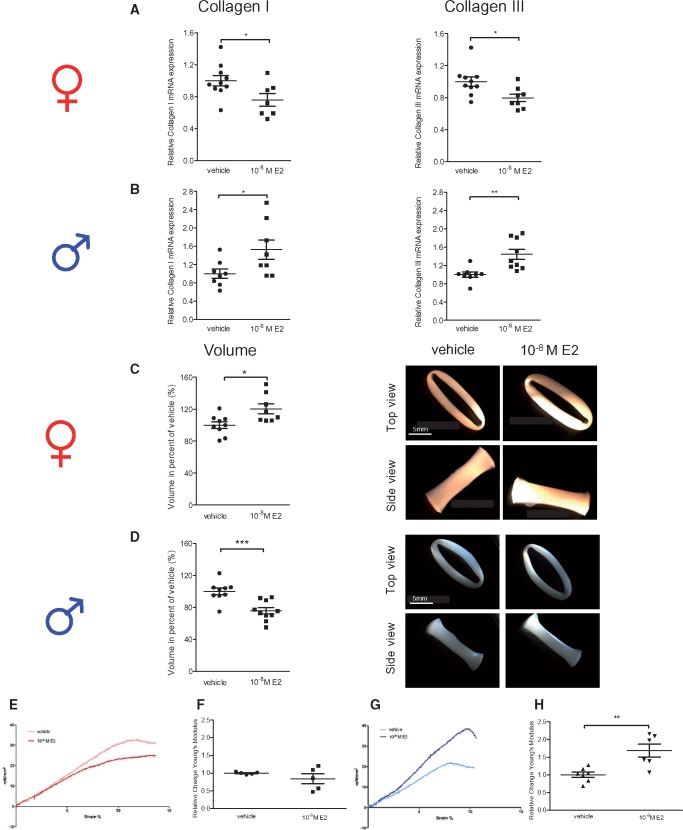Figure 6.
E2 modulates collagen I and III mRNA and tissue properties of ECT derived from female and male rat cardiac fibroblasts in a sex-specific manner. (A and C) ECT derived from female and (B and D) male rCF were analysed after 6 days of vehicle or 10−8 M E2-treatment. Collagen I and III mRNA level were quantified by qPCR and normalized to HPRT. Collagen I and III expression and ECT volumes of E2-treated ECT are given as fold induction of vehicle-treated ECT. Mean ± SEM from seven to ten individual ECT derived from four independently repeated experiments; *P ≤ 0.05, **P ≤ 0.01, ***P ≤ 0.001, comparison between treated ECT and related vehicle control was performed using Mann–Whitney U-test. (E–H) Rheological destructive tensile strength measurements of ECT derived from female and male rCF after 6 days of vehicle or 10−8 M E2-treatment were performed in an organ bath. Representative stress-strain curves of vehicle and 10−8 M E2-treated (E) female (slope of vehicle treated ECT: 3.27 ± 0.01; E2-treated: 2.65 ± 0.01) and (G) male ECT are shown (slope of vehicle treated ECT: 3.02 ± 0.01; E2-treated ECT: 4.86 ± 0.01). Changes of the Young’s modulus of (F) female and (H) male ECT are shown. Changes in the Young’s modulus of E2-treated ECT are given as fold induction of vehicle-treated ECT. Mean ± SEM from five to seven individual ECT derived from three independently repeated experiments; **P ≤ 0.01, comparison between E2-treated cells and related vehicle control was performed using Mann–Whitney U-test.

